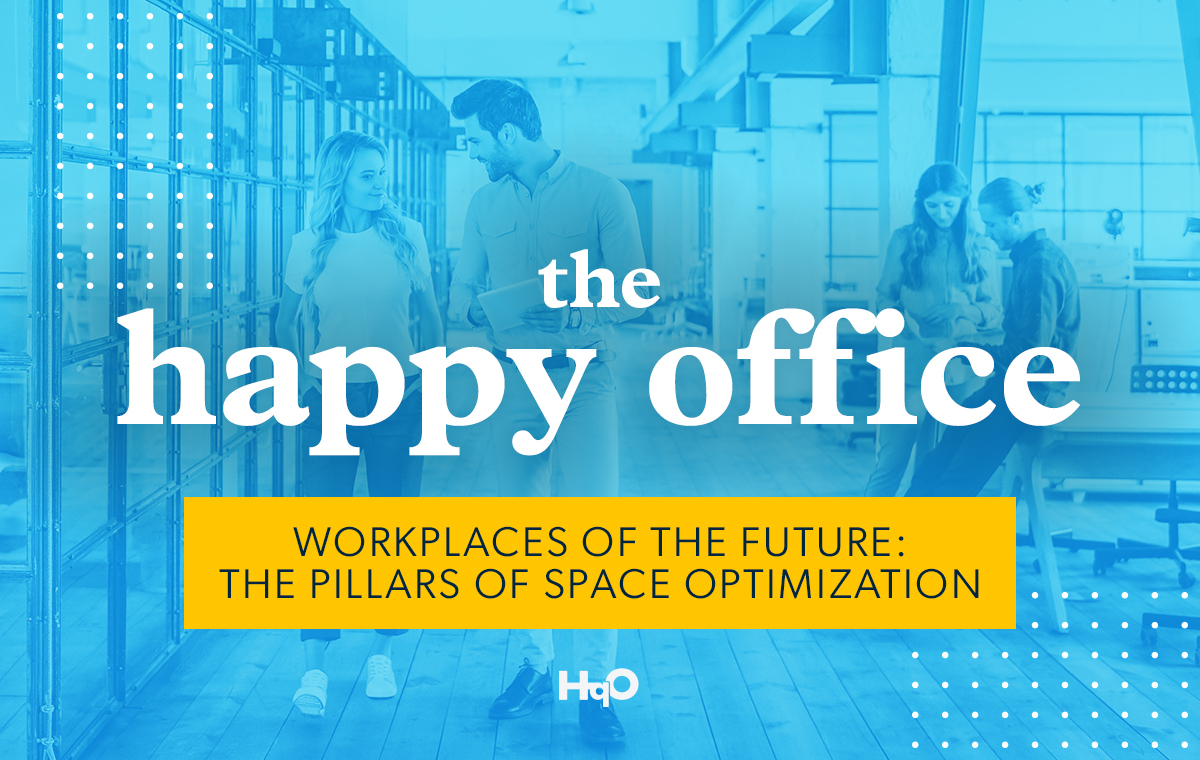We can divide the role of workplace technology in office space optimization into three categories: agility, flexibility, and productivity. Correctly leveraged, a workplace experience platform simultaneously covers each of these points — resulting in employees who are as effective, efficient, and productive as possible. Let’s take a look at each, as well as provide real-world examples of companies doing great things in those areas.
Flexibility
Workplace experience technology improves organizational flexibility on a number of levels, and as such has a positive influence on each of the above three factors. By creating a seamless experience for both remote and in-office workers who are on hybrid schedules, employees and business leaders can easily provide employees with a mobile app that lets employees work where and when they want — the very definition of flexibility. With a workplace experience platform, you and your employees can:
- Book desks
- Reserve conference or meeting rooms
- Create digital mobile access cards
- Use the commuting options you like best, by providing convenient public transport schedules, parking spot reservations, and support of other green commuting options
Additionally, business leaders will be able to keep on top of new trends that will create a desirable workplace for employees by:
- Keeping track of employee sentiment, letting you understand how employees feel about the workplace, so you can make improvements that encourage employees to spend more time in the office
- Leveraging easy-to-digest data oversights that will enable you to optimize your office based on its actual usage, by either reconfiguring physical space, or making changes that create an increasingly flexible experience that encourages employees to spend more time there
Exemplifying flexibility in a post-COVID work environment, automotive industry titan Ford Motor Company in March 2021 told employees they can “continue to work from home ‘indefinitely’ and have ‘flexible hours approved by their managers.’” It also announced a “radical redesign” of its office, “retrofitting workspaces to be versatile and adaptable to future needs for change. This includes walls, furniture, fixtures, conference rooms, and collaborative spaces. Attention will be paid to enabling video calls and deploying technology to enhance virtual connectivity among co-workers and managers.”
Agility
At first glance, agility might seem to fall into the same category as flexibility. While related, flexibility refers to responding quickly to today’s rapidly changing environment, whether you need to increase or reduce capacity, change your real estate footprint, respond to new employee needs, rearrange spaces because of new COVID mandates — or another need that arises and calls for immediate attention.
Just like an agile team or department, the quick reactions resulting from an agile workplace require the implementation of digital tools such as:
- Continuous analytics of the entire workplace experience, so workplace experience managers can see what’s happening in real-time
- Employee feedback so you can quickly identify and address issues
- Self-service administration, so managers can make adjustments to, for example, room capacity on the fly
- Targeted communication that keeps employees up-to-date on everything that’s happening in the office
- Replacing on-site catering with flexible meal ordering
WeWork is one example of a champion of agile working environments. “Agile office design,” reads a recent blog, “is about providing workers with a variety of useful spaces where they can feel at their most productive.” These spaces include open plan areas, quiet zones, breakout spaces, resource areas, and touchdown spaces, each offering something of value to employees, whether they’re looking to collaborate, go heads-down on a big project — or just grab a quick snack.
Productivity
A unified mobile app lets employees access all the digital and physical resources that they need to manage their workplace experience, in one place. This ensures that employees will easily find and more actively use those resources — yielding a greater return on investment.
These capabilities include:
- Consolidated mobile app with similar experience for different capabilities
- Advanced room and desk booking
- Visitor management
- Access to time-saving on-site amenities and convenience services such as dry cleaning, manicures, and more
- Food ordering
- Commuter alerts so people spend less time commuting
A perennial leader in tech, we can look to Microsoft for inspiration regarding productivity. Its report on hybrid work, for example, revealed that more than “people who interacted with their coworkers more closely than before not only experienced stronger work relationships, but also reported higher productivity and better overall well-being.”
These interactions can be taken into consideration by the “66% of business decision-makers who are considering redesigning physical spaces to better accommodate hybrid work environments.”
“Over the past year, no area has undergone more rapid transformation than the way we work,” said Satya Nadella, Microsoft CEO. “Employee expectations are changing, and we will need to define productivity much more broadly — inclusive of collaboration, learning, and well-being to drive career advancement for every worker, including frontline and knowledge workers, as well as for new graduates and those who are in the workforce today. All this needs to be done with flexibility in when, where, and how people work.”
Want to learn more about space optimization in the office? Schedule a demo with us today.



